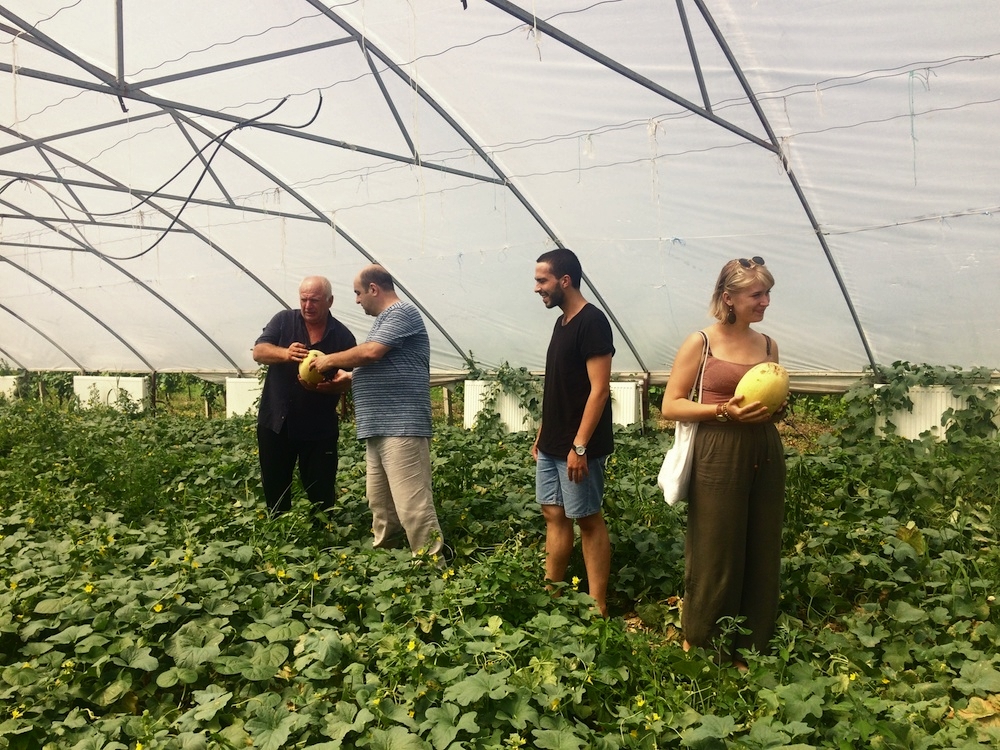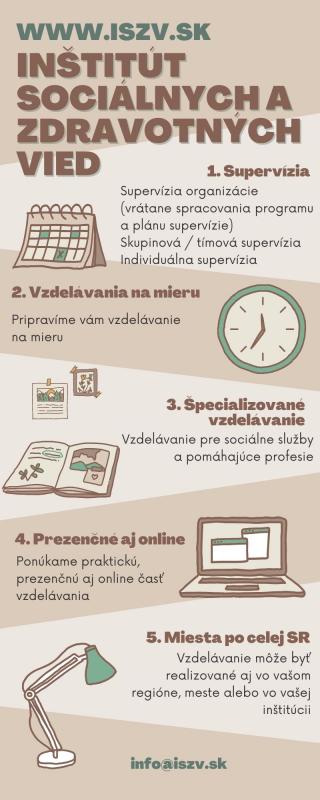Although cooperatives are efficient structures for small-scale producers, they are perceived very negatively in the post-Soviet countries. Instead of the democratization, sovereignty and economic benefits, Soviet cooperatives (or kolkhozes), delivered rather land grabbing and nationalization of private sector. While European or North-American cooperatives were centres of thriving economic life, Soviet kolkhoz was a tool for five-year planning and economic regulation. Is it even possible to work with the idea of cooperatives in such environment? Yes! Georgia is the case where “modern” cooperatives are flourishing with proper campaigning and advocacy.
 Agricultural project of People in Need NGO in Terjola region in Georgia
Agricultural project of People in Need NGO in Terjola region in Georgia
In the field of development assistance, cooperatives and self-help groups are currently recognized as efficient and effective tool for community activization, democratization and capital mobilization. The success can be seen across the globe, from Latin America to Africa. Despite this fact, people in post-Soviet countries keep distrust to cooperatives and the label itself often triggers passionate debate about the history. Five years ago, Georgians had the very similar attitude to cooperatives as thousands of people living in the post-soviet countries. However, thanks to wide-spread campaigning and support from the government together with international and local NGOs and EU the situation has changed rapidly.
True cooperative pioneers in Germany and England
The roots of cooperatives can be found in the era of industrialization, when the newly developing industry needed to satisfy its labour demand. Suddenly, cities were offering jobs and attracting people from the countryside. While the peasant life was tough and dirty, cities were promising prosperity and glory. Of course, the glamorized urban life was lived mainly by the aristocracy and the migrants from countryside had no other choice than to work as a cheap labour in alarming conditions and to live in the poverty again. The early stage of capitalism was ruining working class life and resulted in the need of cooperation.
Although the first ideas of collective action and community institutionalization emerged in Germany, the true cooperative pioneers were from England. In 1844 was established Rochdale Society of Equitable Pioneers, a group of 28 dissatisfied textile workers from Rochdale. The aim of the Society was to defend the rights of working class as well as to fight for higher salaries. Rather than to strike and become violent, the members of the Rochdale Society of Equitable Pioneers focused on benefits rising from the cooperation among community members. The cooperative was building houses for its members as well as was selling goods for fair price. The work and action of society was based on the set of principles, among other: self-help, responsibility, democracy, equality, solidarity and justice. These principles are used until today and are officially recognized by International Alliance of Cooperatives (ICA).
Farming collectively after the Soviet revolution
The idea of cooperatives could be found in the Russian Empire as well. In the second half of 19th century, when archaic system of land allocation was oppressing rural population, peasants started to form communes as opposed to individual farmstead held by aristocracy. The majority of peasants had farming land in the communal ownership belonging to the respected village. The land division was based on very simple principle – each household had the right to claim a parcel of land according to the number of adults in the household. The parcels were re-allocated regularly by the census, ensuring the equitable access to the land. Although the communes became a symbol of serfdom emancipation and was bringing in social ideas, the division of land within the communes was primarily used as a tool for tax collection.
The misuse of the idea of cooperatives was continuing after the Soviet revolution in 1917, when Russian Empire was overthrown by Bolsheviks and the republic was established. The first collectivization efforts started in the early 1920’s, when the newly established Russian Soviet Federative Socialist Republic was legitimizing the Bolshevik Revolution by enforcing communist principles. The collective farms, the predecessors of kolkhozes, were spontaneously emerging across the country with the help of propaganda workers who referred to traditional communes from the late 19th century. As communes were extremely vital and popular, it is not surprising that people living in the impoverished rural areas were keen to start farming collectively. However, the initial idea of voluntarily formed cooperatives was twisted in 1928, when Joseph Stalin started to enforce the ideology of collectivization and his regime was forcing peasants to join the kolkhozes.
Soviet kolkhozes against small-scale farmers
While western cooperatives were empowering small-scale farmers, the purpose of soviet kolkhozes was to fight against them. The Communist Party of the Soviet Union was not favouring private agriculture because, according to Lenin, small-scale production was an engine for capitalism and bourgeoisie. Literally, the collectivization and kolkhozes represented a remedy for the problem called “capitalism”.
Of course, cooperatives were always bearers of socialist ideas, but the Soviet regime rather exploited the principles and used them to their own advantage. Although Soviet government proclaimed the ownership of peasants over the cooperative, in fact, it was maintained by the state through the designated kolkhoz chairman. Members were treated more like employees, paid according to their proportion of work and very often in kind. The yields were bought out by the state at fixed price which was generally very low, bringing higher revenues to the state rather than to the kolkhozes. Lately, the government also set production quotas for each crop. Finally, kolkhoz members were deprived of the right to leave. Until 1969, when the law has been changed, the children born on the collective land were obliged to work there as adults, allowed to leave only with a special permission.
Violation of the cooperative’s principles had direct impact on the functioning of kolkhozes. While involuntary membership, quasi-democracy and loss of sovereignty negatively influenced the motivation of kolkhozes’ members, five-year planning and production quotas damaged their economic viability and competitiveness. The establishment of these cooperatives was not based on the need of its members, kolkhozes were de facto created by the state. In 1991, when Soviet Union was dissolved, most of the kolkhozes dissolved together with the old regime. Former member states of Soviet Union have started the process of economic transformation, with privatization, land and property restitution as free market mantra. It is not surprising, that farmers who suddenly got their land back and could dispose it freely were not willing to re-form the cooperatives. Even though societies in post-soviet countries could learn a lot from the cooperatives based on ICA principles, the absence of democratic principles in soviet kolkhozes and overemphasized economic planning led to their resentment.
The agricultural reform by Georgian government
The very same situation was in Georgia, where cooperatives “in modern sense” were practically non-existent until 2013. Even though Georgian agriculture used to be pride of the whole Soviet Union, historical events of 1990’s and economic transformation caused decline in the food production and literally ruined the whole agricultural sector. Georgian government have started with the agricultural reform immediately after gaining independence in 1991. The land reform was based on the land restitution and privatization.
However the idea of land redistribution was honourable, it was not functioning at all. Suddenly, the large-scale agriculture disappeared and was replaced by small-scale farms oriented more likely towards subsistence production. The huge parcels were crumbled to small pieces of land, no bigger than 1,5 ha. From the food exporter became food importer. While in 1990 agriculture was contributing to GDP by 30%, in 2017 the share of agriculture on GDP was only 9,6%. Still, agriculture sector employs more than half of population. Although functioning agriculture system is a key for economic growth, Georgian agriculture fell into oblivion.
Saakashvili’s era for the future development path
The situation started to change in 2004, when Georgians voted in the first democratic elections and Mikheil Saakashvili became president. For sure, Saakashvili was not ideal politician and the end of his political career was represented a huge controversy. Still, Saakashvili’s era was fundamental for the future development path of Georgia. His rule has translated to economic boom, administration reform and fight against low level corruption. Most importantly, Saakashvili clearly proclaimed his aversion to Russia and has started Georgian “westernization”. After the Russo-Georgian war in 2008, which was partially invoked by Russia, the ties between Georgia, NATO and EU have even strengthened.
In 2009 Georgia became a member of Eastern Partnership, EU initiative which was supposed to result into the signature of Association Agreement, which would (among other benefits) result to increase of market access between Georgian and EU. At the first sight, it might seem very beneficial for Georgia but it could be actually really harming for its agriculture. Georgian agriculture is not only malfunctioning, it also does not fulfil the hygienic norms set by EU. Therefore, the Association Agreement might not have necessarily brought any advantage to small-scale farmers. They would not be able to export their produce anyway. Instead, Georgian food market would be flooded by cheaper European goods.
It was obvious that the local agriculture needs heavy modernization which would not be possible without governmental support and external funding. Therefore in 2012, when Georgia started the negotiation of Association Agreement, agriculture rose to the top of the governmental agenda. And surprisingly enough, government started to mention also cooperatives among other tools for agriculture modernization.
EU neighbourhood program for agriculture and rural development
FAO and EU through ENPARD, European neighbourhood programme for agriculture and rural development, were the most important actors of the cooperative rebirth. In 2013 Georgian Ministry of Agriculture (with the financial and expert support from the EU and FAO) started the massive campaign focused on cooperative development. In the same year, Government of Georgia finally passed a law on cooperatives and there was also introduced Agricultural Cooperative’s Development Agency aimed at supporting the process of cooperative establishment and capacity building. However, Georgian farmers were hostile to the cooperatives as the negative connotation to the Soviet Union’s kolkhozes was still vital in the society.
Even though the financial support and capacity building were primarily focused on the formation of cooperatives and the modernization of agriculture, substantial part of the budget was also spent on the campaigning and awareness raising. It was hard to explain to the farmers that “modern” cooperatives have nothing to do with the kolkhozes, that no one is going to take the land from them and that cooperative is a business like any other. It was absolutely crucial to highlight the importance of cooperation and collective action, which is always more efficient than the action of an individual. Finally, it had to be emphasized that cooperatives might lead to the economy of scale, increased market competitiveness and ability to get subsidies and other support from the government and development organizations.
Czech footprint in Terjola region
One of the organizations using ENPARD funds for cooperatives promotion is People in Need (PIN), development NGO based in the Czech Republic. PIN’s projects, implemented also in the cooperation with Czech Development Agency, can be found in Terjola region, where the NGO become an important actor. This importance is, however, very specific as it is not caused only by the direct support to the food producers, but also by PIN’s Czech origin, carrying a very specific form of comparative advantage in cooperative promotion. Although Czech Republic (Czechoslovakia) have never been part of Soviet Union, it still belonged to the Eastern Block, where the credibility of cooperatives is damaged in the very same way as in Georgia. Shared history and understanding of the kolkhoz meaning can play a vital role in advocacy for cooperatives – if one country with the Soviet history could cross the shadow of Soviet kolkhozes, why would not it be for example Georgia? PIN’s effort seems to be successful and the cooperatives supported by the NGO have become prosperous, building their own networks of suppliers and buyers.
Thanks to similar initiatives in the couple past years, Georgian cooperative sector has been flourishing. While cooperatives were de facto non-existing before 2013, there was nearly 1200 newly registered coops until 2015. Newly established cooperatives have usually about 15 members and operate on a very limited land. Therefore, it is crucial to undertake second step of cooperative development – to start forming associations and to cooperate across different sectors. Agriculture transformation and its adaptation to European conditions is a long-time run, however, if it is taken collectively, the chances to succeed are much higher.
Written by Lenka Voleníková. The author is a PhD student at the Department of Development and Environmental Studies of Palacky University Olomouc, Czech Republic. Photos: KRES / Palacky University students

Note: The article is a part of the DevEd project ‘Development Cooperation First Hand’, supported by Czech Development Agency (CzechAid).























